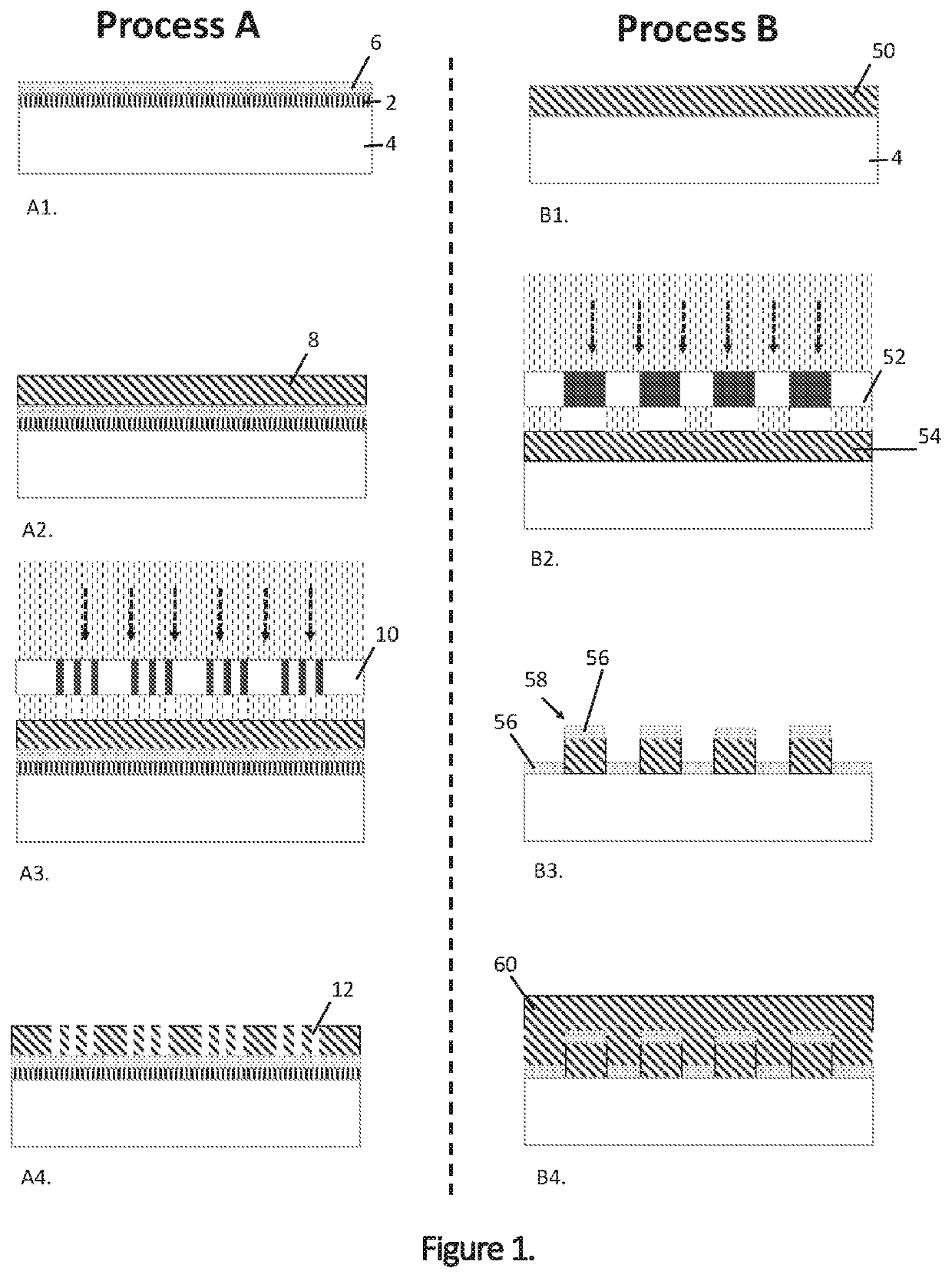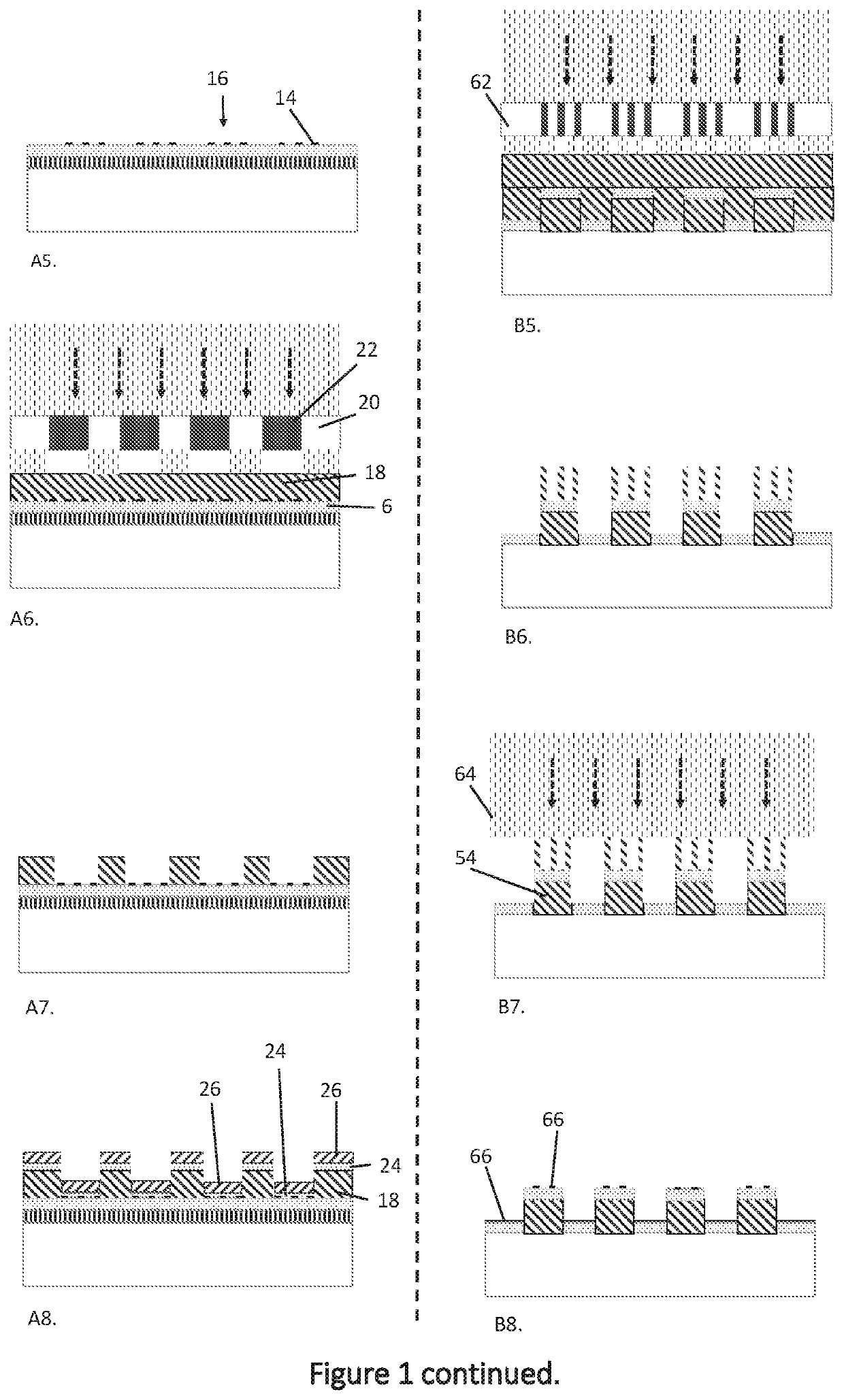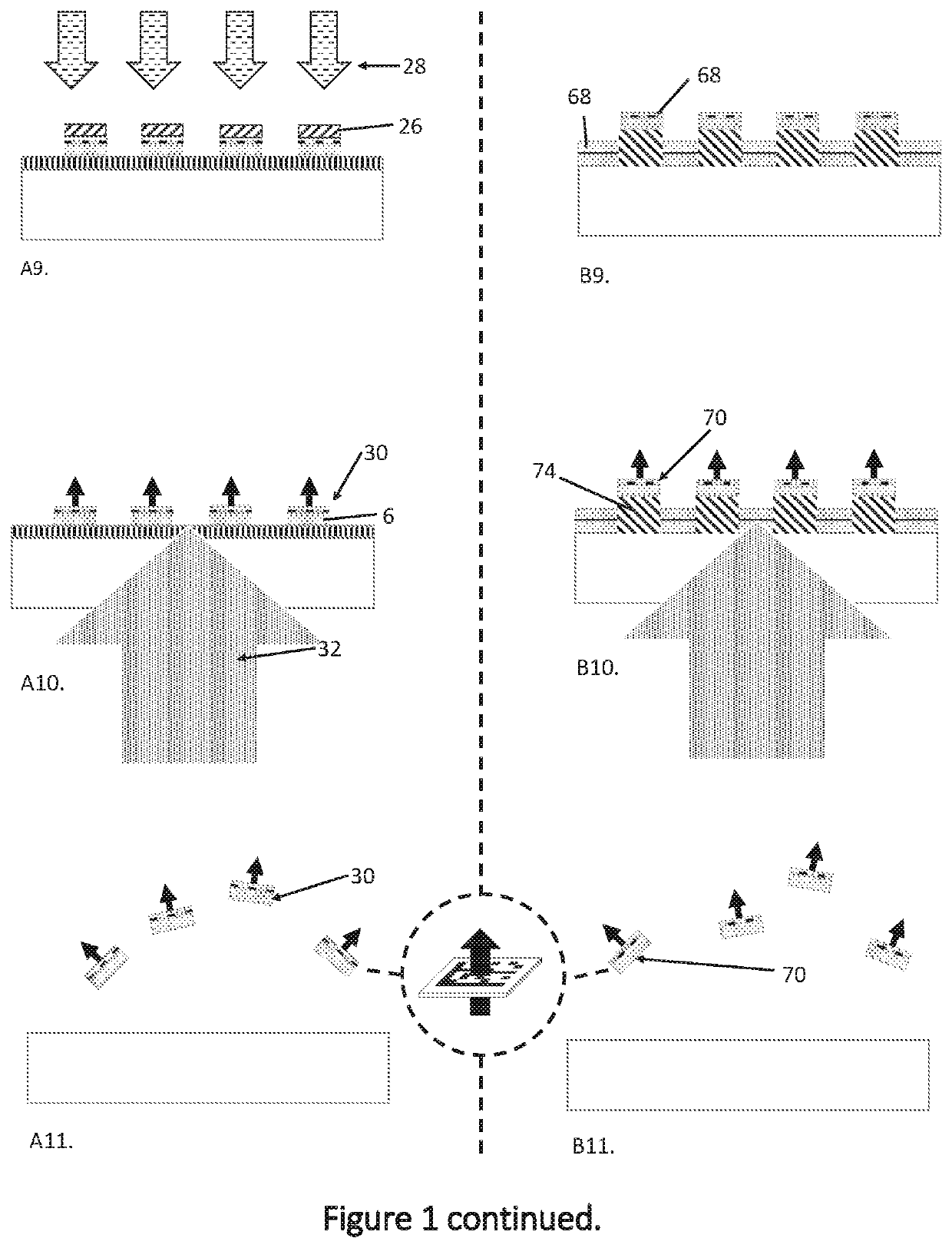Magnetic particle and method
a magnetic particle and particle technology, applied in the field of magnetic particle and method, can solve the problems of limited particle size, preventing the use of bioassays, and affecting the magnetic properties of particles, and achieves the effects of high magnetic anisotropy, high degree of control over the magnetic response, and extreme precision in the engineering of the magnetic properties of the mcs
- Summary
- Abstract
- Description
- Claims
- Application Information
AI Technical Summary
Benefits of technology
Problems solved by technology
Method used
Image
Examples
Embodiment Construction
[0062]Specific embodiments of the invention will now be described by way of example, with reference to the accompanying drawings in which:
[0063]FIG. 1 illustrates steps in two processes, Process A and Process B, for the fabrication of magnetic particles according to first and second embodiments of the invention;
[0064]FIG. 2 is a polar magneto-optical Kerr effect (MOKE) measurement of the magnetic response of the magnetic thin film Au(100.0) / Ta(2) / Pt(4) / CoFeB(0.6) / Pt(1.2) / CoFeB(0.6) / Pt(1.2) / CoFeB(0.6) / Pt(1.2) / CoFeB(0.6) / Pt(5.0) used in the particles of the embodiments;
[0065]FIGS. 3(a) and 3(b) illustrate how the readable code and the magnetic states in particles according to the embodiments are linked to ensure that the readable code may always be aligned to an external detector, such as a camera or barcode reader, by an applied magnetic field, and show images of readable codes of particles imaged by a detector;
[0066]FIG. 4 illustrates stray field strength as a function of distance f...
PUM
| Property | Measurement | Unit |
|---|---|---|
| magnetisation | aaaaa | aaaaa |
| magnetisation | aaaaa | aaaaa |
| thickness | aaaaa | aaaaa |
Abstract
Description
Claims
Application Information
 Login to View More
Login to View More - R&D
- Intellectual Property
- Life Sciences
- Materials
- Tech Scout
- Unparalleled Data Quality
- Higher Quality Content
- 60% Fewer Hallucinations
Browse by: Latest US Patents, China's latest patents, Technical Efficacy Thesaurus, Application Domain, Technology Topic, Popular Technical Reports.
© 2025 PatSnap. All rights reserved.Legal|Privacy policy|Modern Slavery Act Transparency Statement|Sitemap|About US| Contact US: help@patsnap.com



